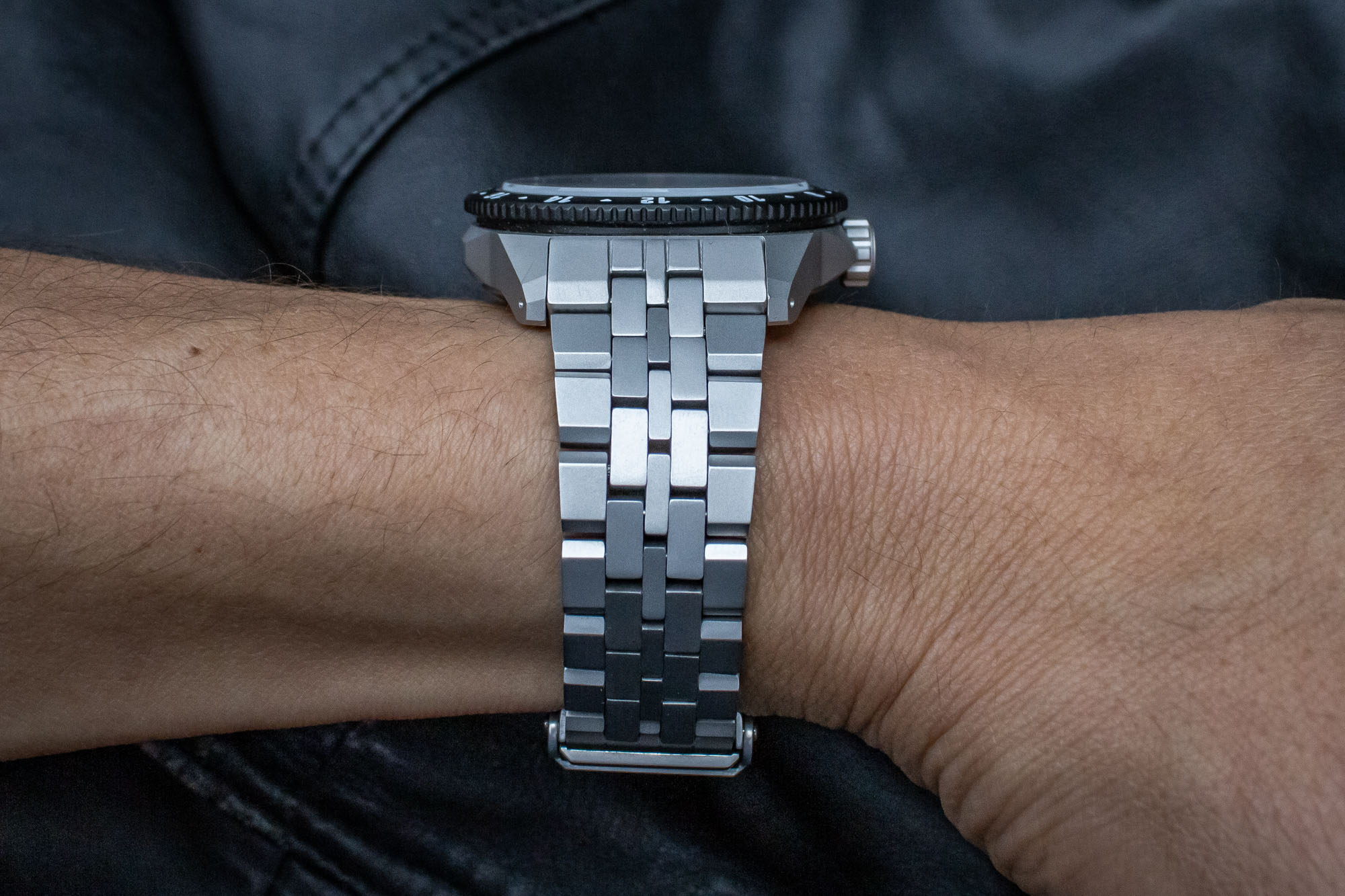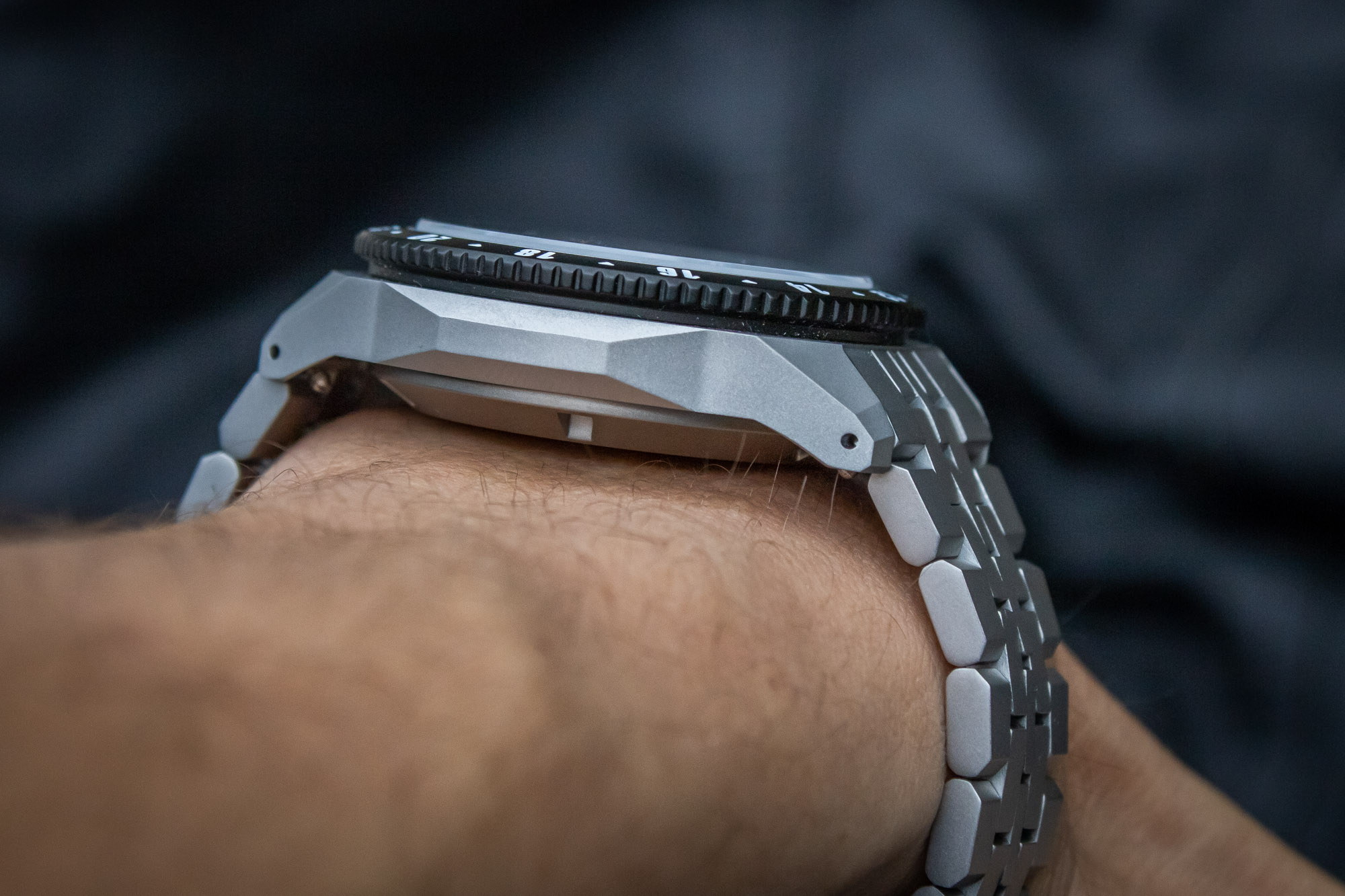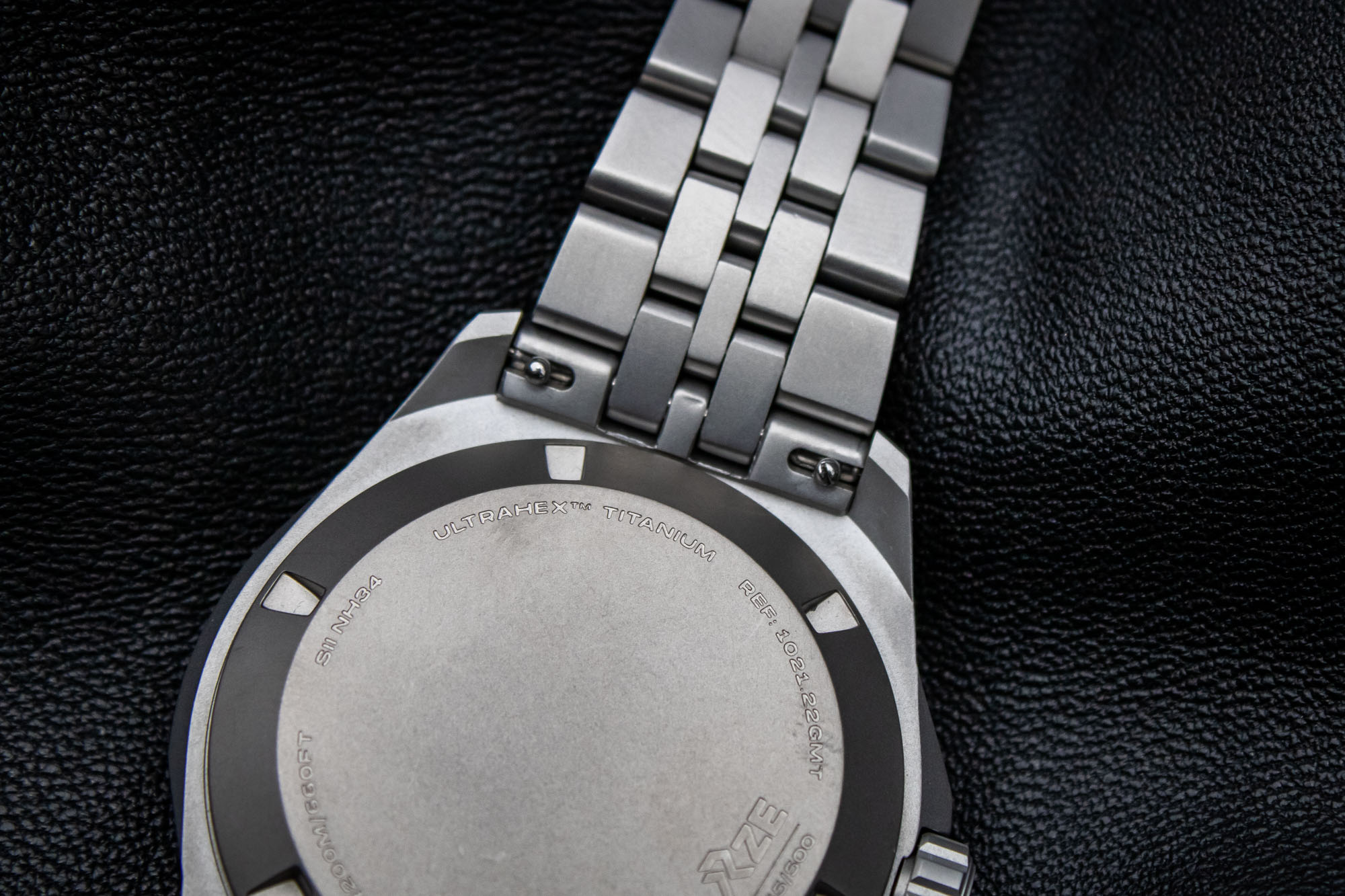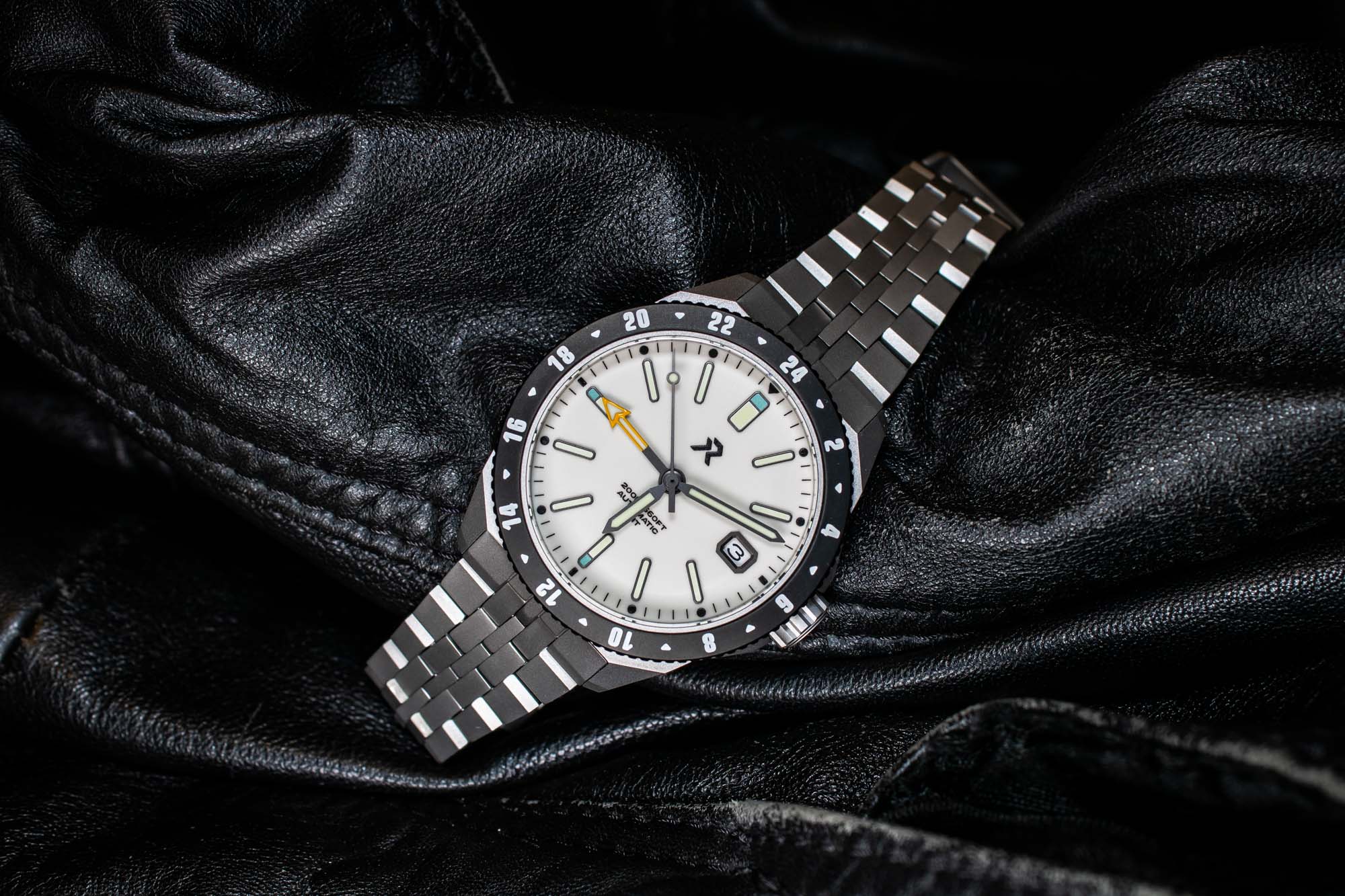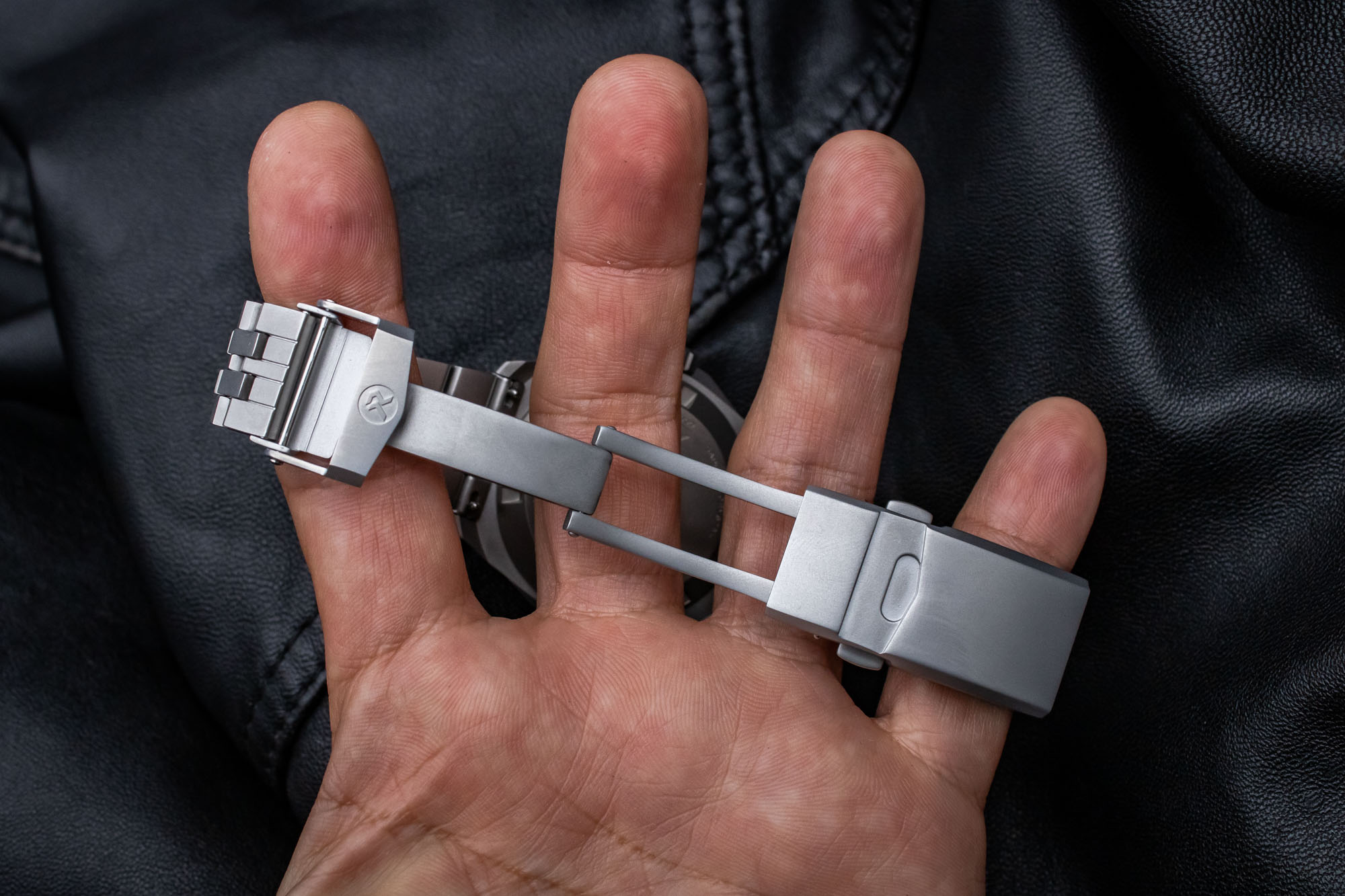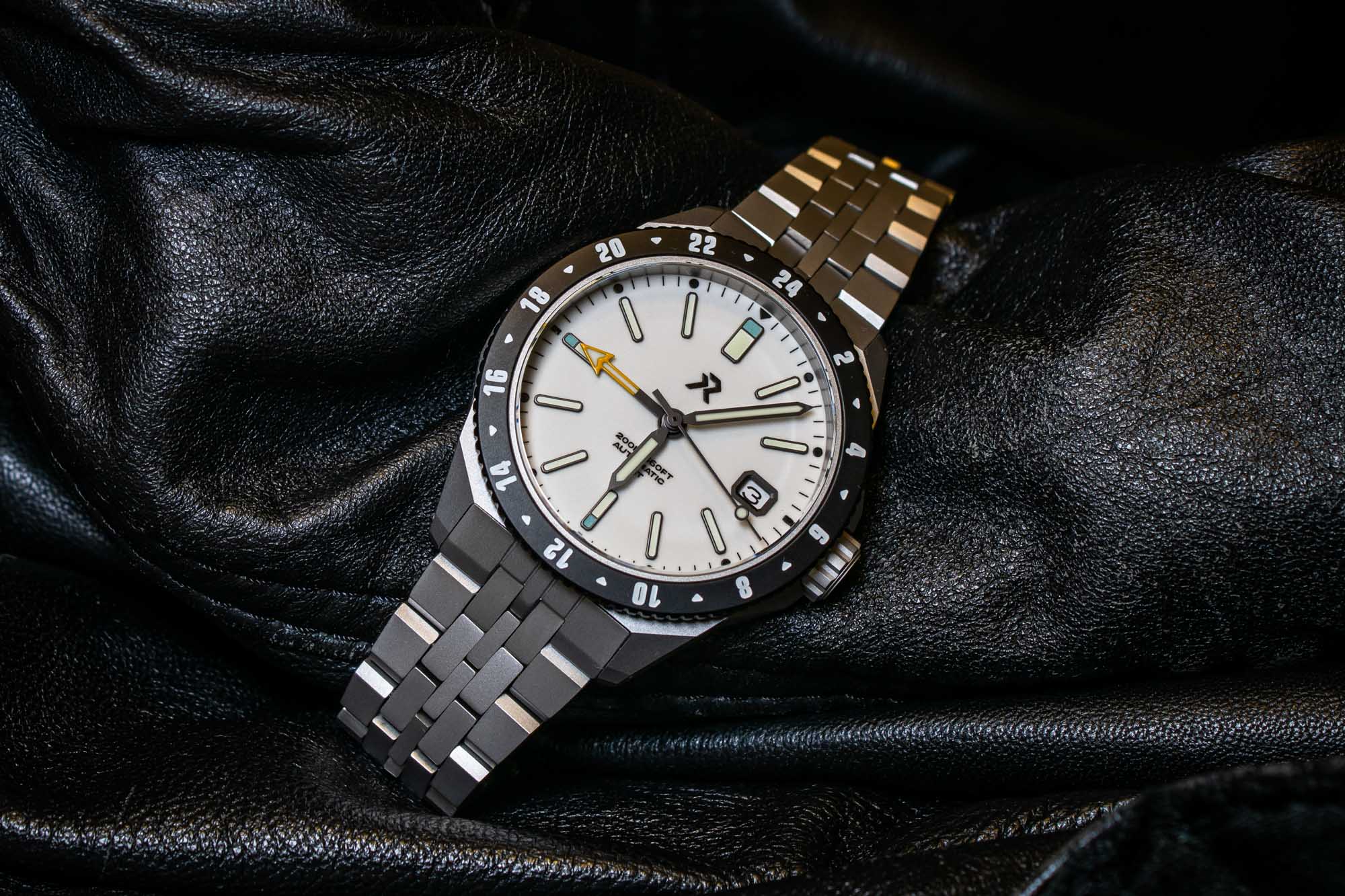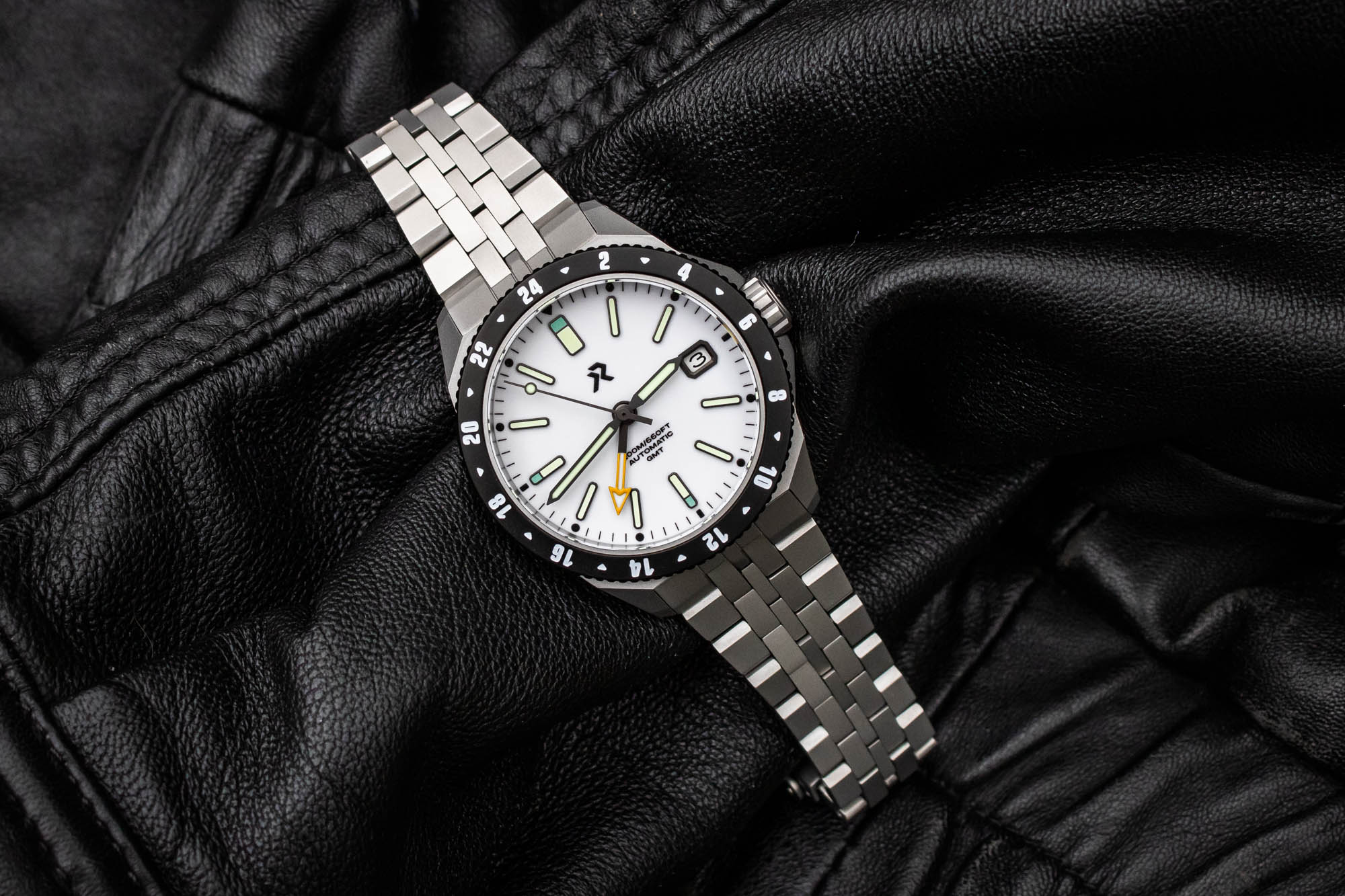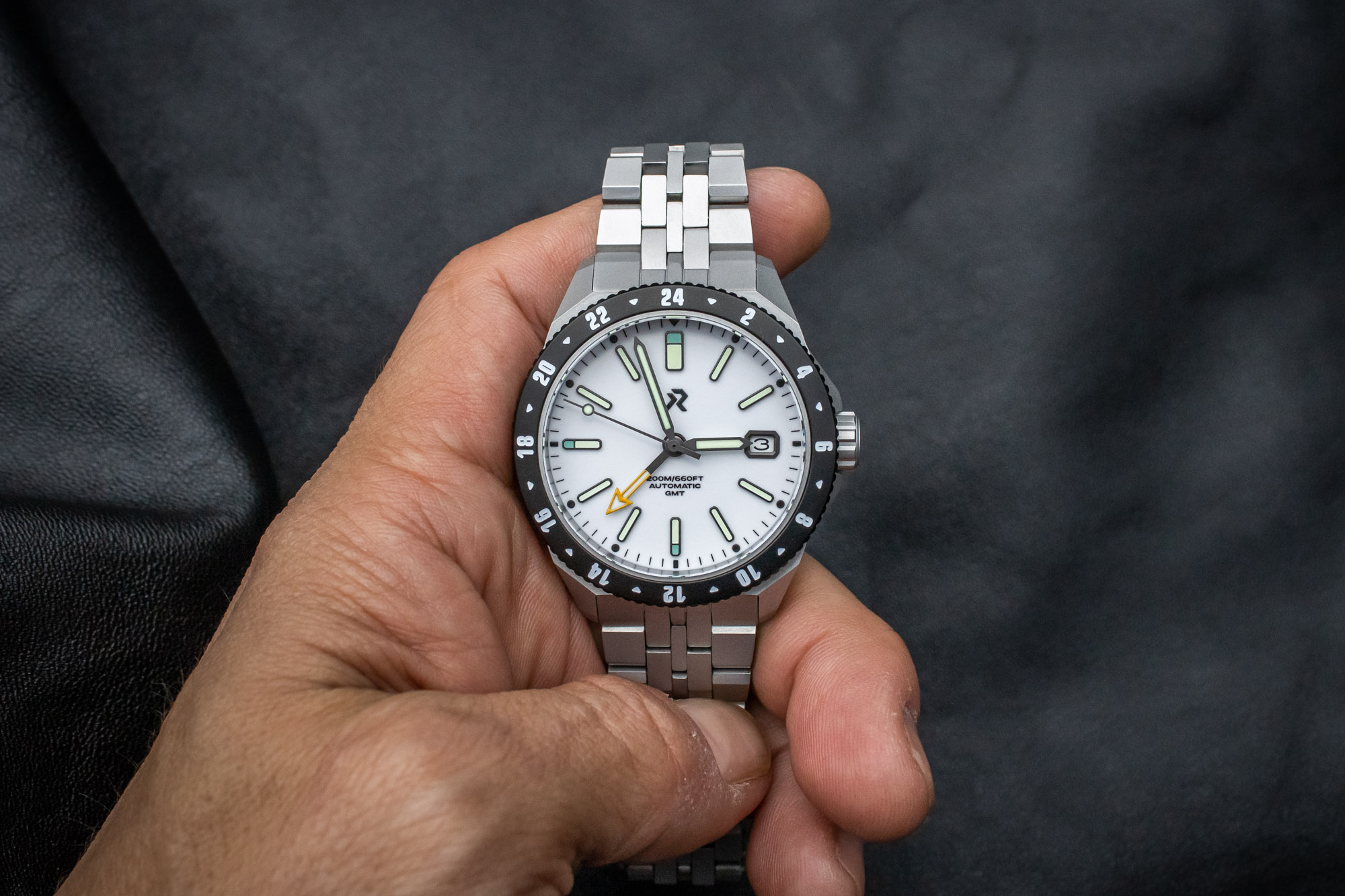
When it comes to affordable titanium sports watches, no conversation should be complete without including RZE. Founded by Travis Tan, who works as a commercial airline pilot, and is acutely aware of the high-performance properties of titanium due to the prominent role that it plays within the aviation industry, RZE exclusively uses titanium as the case material of its watches, and the brand delivers incredibly value-driven offerings that are all priced at significantly below a thousand dollars. Arguably one of the strongest value propositions among the various new releases from 2022 was the RZE Ascentus GMT, which is a surface-hardened titanium sports watch with a 200-meter depth rating that is powered by Seiko’s new NH34 mechanical GMT movement and fitted with a matching titanium bracelet — all for less than the price of what many brands charge for a quartz chronograph.
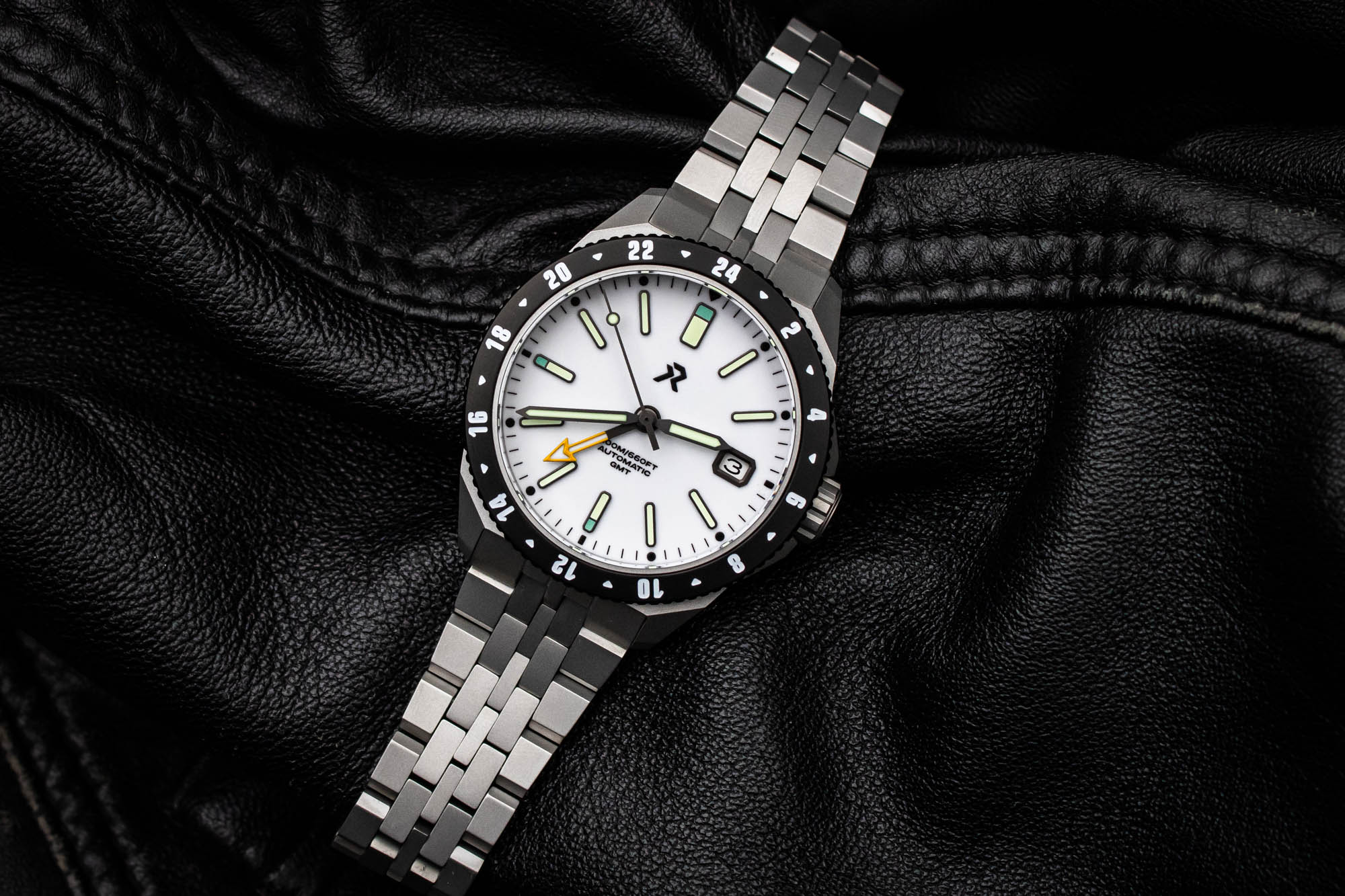
I first became aware of RZE when I chose to feature the dive witch sibling of the Ascentus GMT (the RZE Endeavour) in my column Actually Affordable (shout out to fellow aBlogtoWatch writer Mike Razak for turning me onto the brand). That said, shortly after I wrote about the Endeavour, RZE announced the Ascentus, which is essentially the GMT version of the Endeavor that adds mechanical GMT functionality and a significantly more refined bracelet, all for just fifty extra bucks. Part of the reason why RZE is able to offer such strong value for the money within this category is that Travis’s uncle-in-law owns the factory where RZE watches are manufactured. Not only does this streamline the production process and eliminate some of the obstacles of working with third-party suppliers and manufacturing partners, but if there is any discount to be had in that relationship, Travis seems to have passed it along to his customers, as many of the watches that RZE produces would represent strong values if they were crafted from traditional stainless steel, let alone grade 2 titanium that has been given the brand’s UltraHex coating, which is a clear IP layer that increases the surface hardness of the metal up to 1,200Hv and prevents the usual dark oxide layer from forming on its surface for a pale bead-blasted finish.
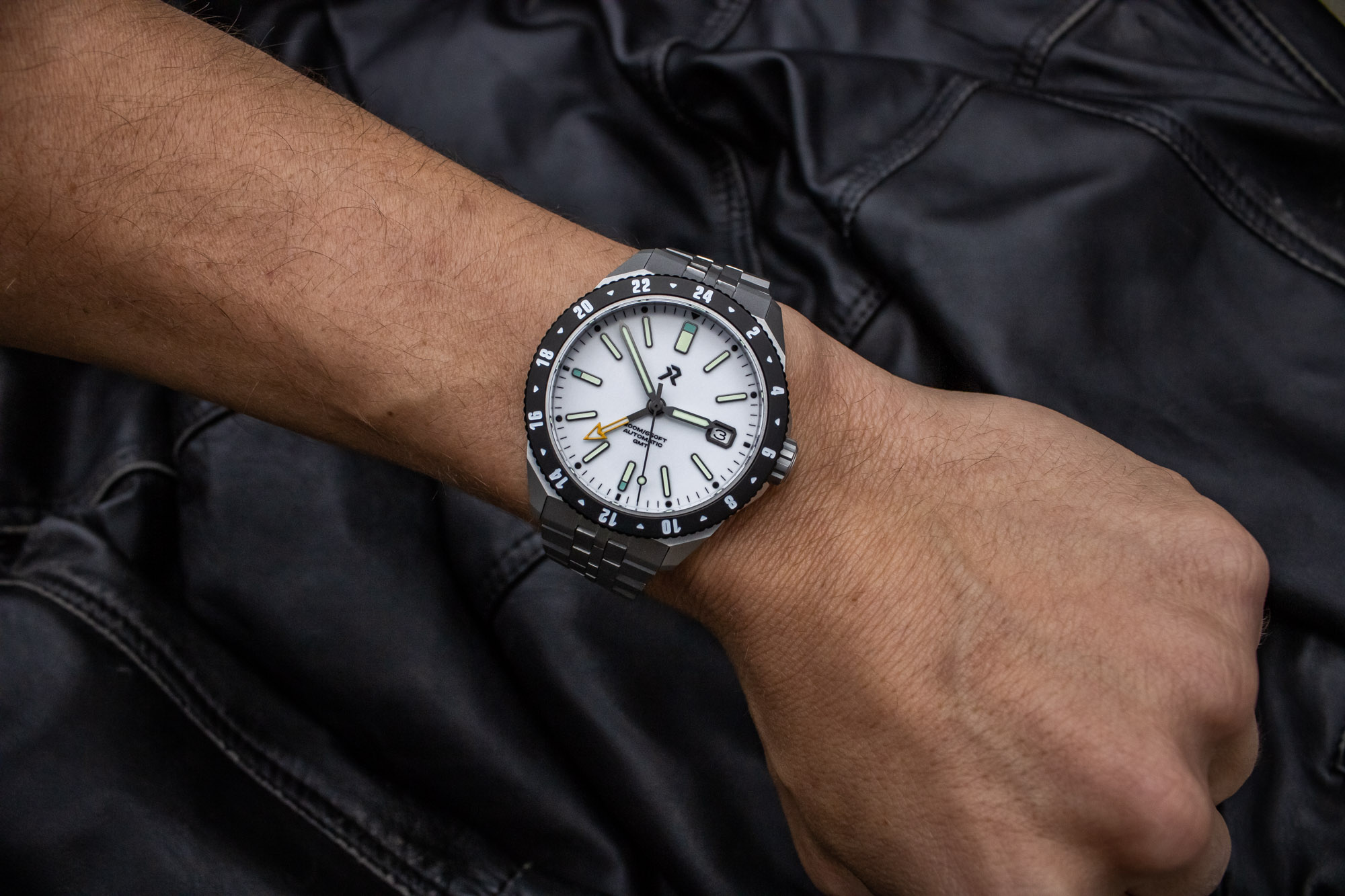
The overall case profile of the RZE Ascentus GMT is largely the same as the Endeavour diver, although its proportions have been slightly updated in order to accommodate its new GMT movement and give it a slightly more refined stance on the wrist. The entirely matte bead-blasted case still has a compact lug-to-lug measurement of 46mm, although it now measures half a millimeter smaller in diameter at 40mm, and half a millimeter thicker at 13mm, which also includes the flat sapphire crystal with anti-reflective coating on the interior surface that slightly sticks up above the rim of the bezel. The angular and faceted lugs are still set 20mm apart, and just like on its dive watch sibling, the lugs of the Ascentus GMT still feature drilled holes to permit easy strap changes. Despite not actually being a dive watch, the RZE Ascentus still offers the same 200-meter depth rating as the Endeavor, which is achieved by a solid screw-down titanium caseback paired with a signed screw-down winding crown that sits between angular crown guards at the 3 o’clock location. Similar to the Endeavor diver, the 9 o’clock side of the case receives a small angular protrusion to offer a sense of visual symmetry and additional protection against accidental rotation of the bezel.
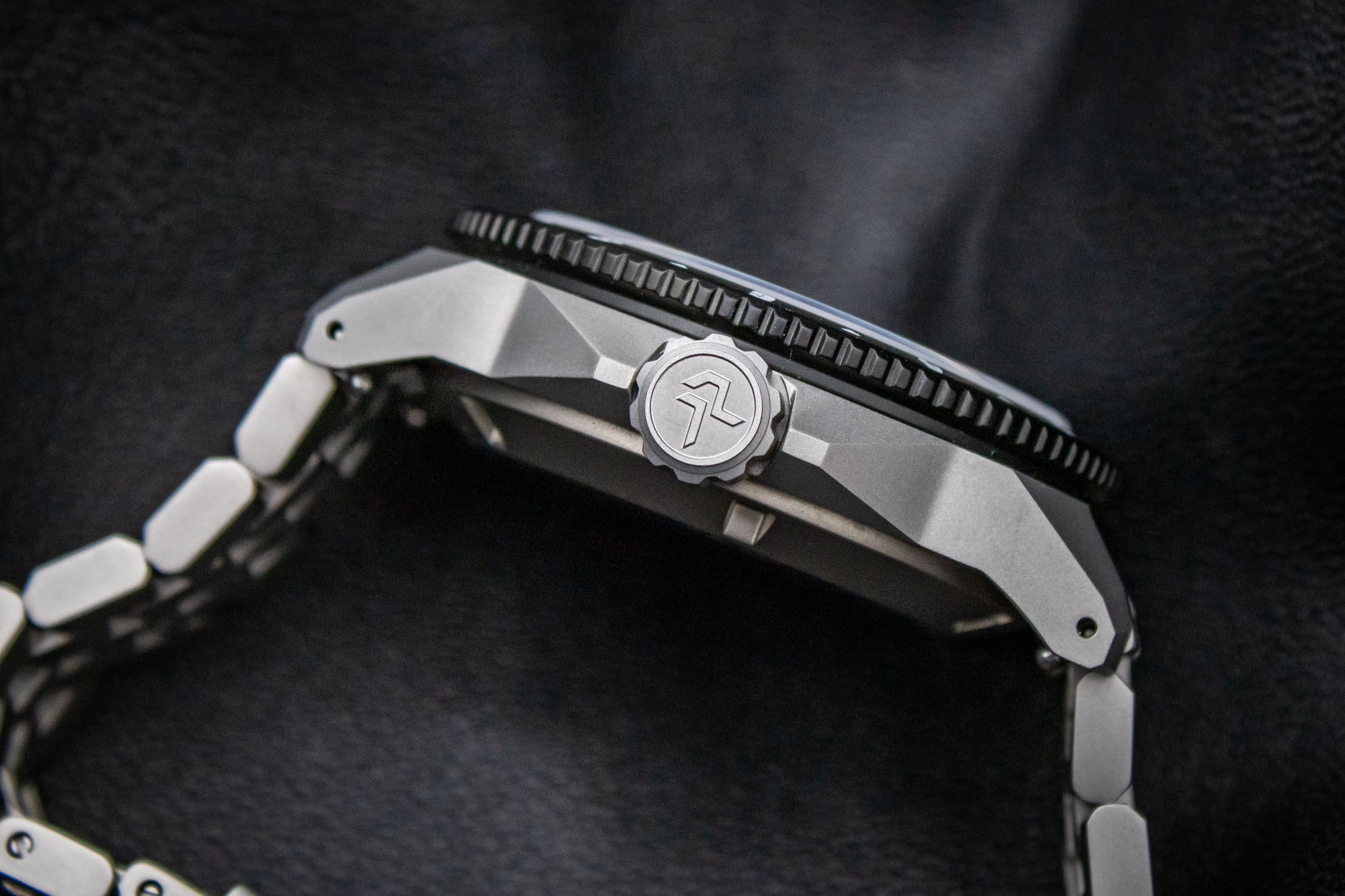
On the topic of accidental bezel rotation, this is arguably my single biggest nitpick with the watch. Given that it is a 24-hour bezel, bidirectional rotation with either a 48-click or 96-click rotation would be ideal, yet the bezel that is fitted to the RZE Ascentus GMT features a unidirectional 120-click motion, just like you would expect to find on a traditional dive watch. Had it been a 60-minute bezel and the watch included its 24-hour scale printed upon its dial, a unidirectional bezel would have been entirely appropriate, yet given that the bezel features a 24-hour scale, there is no reason to have this unidirectional safety feature intended for dive watches, even if you look past its 120-click motion. While I may nitpick about the rotational direction of the bezel, I actually quite like the actual design of it, as it features a durable single-piece construction with a black DLC finish and blue-glowing Super-LumiNova markings for easy access to the secondary timezone in the dark. While the lines of the bezel markings themselves aren’t the crispest, they do glow quite brightly, and given the rather utilitarian design ethos of the watch itself, I’d personally rather have the bezel markings go a bit heavy on the lume and be a bit less-defined than be perfectly crisp but fail to offer any real low-light legibility.
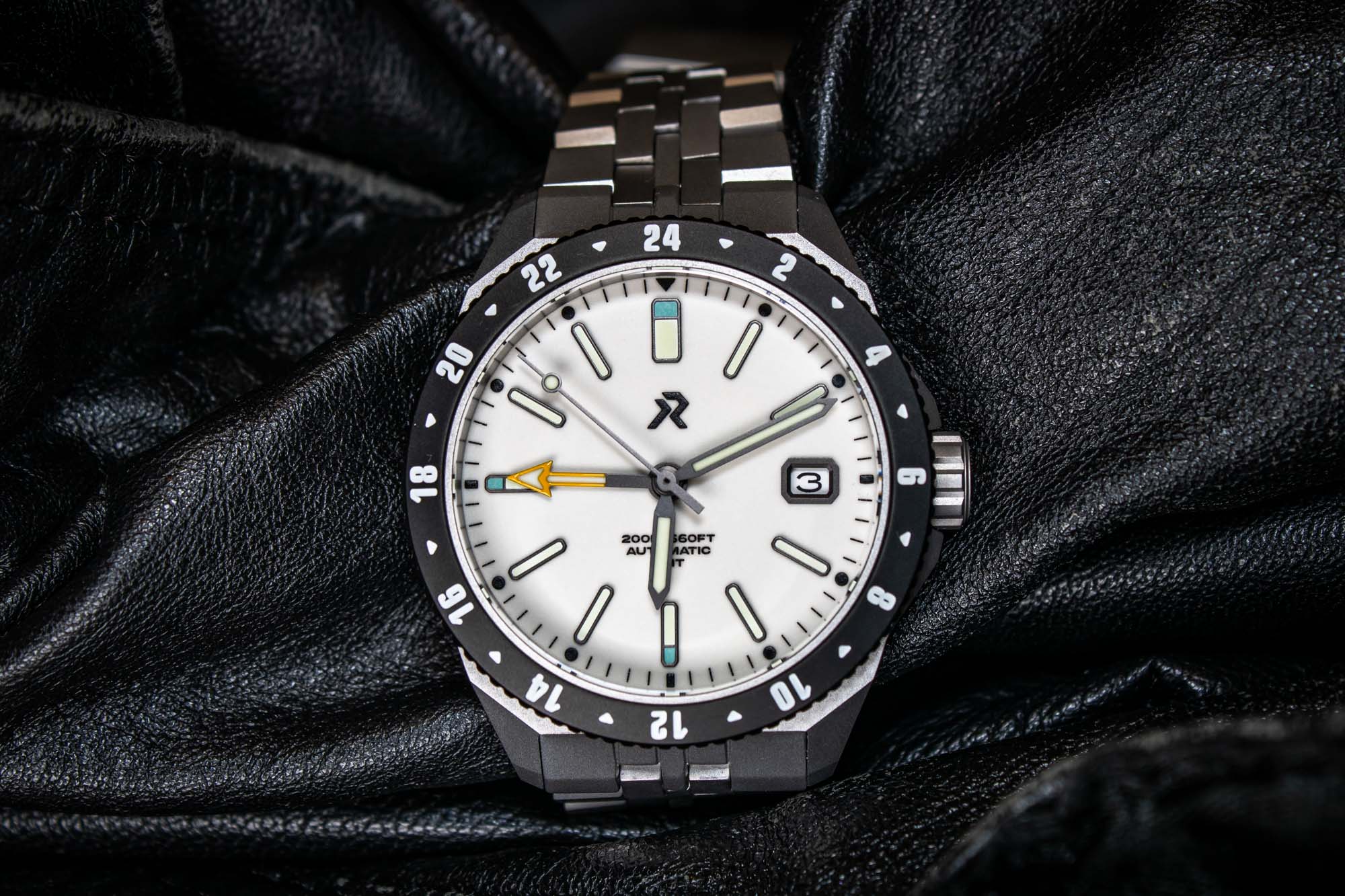
The overall design of the dial fitted to the RZE Ascentus GMT is very similar to that of the Endeavor diver, although it now features the addition of a date window at the 3 o’clock location, along with a small “GMT” designation on the lower half of its dial. The design of the hands has also largely been carried over from the Endeavour, and they feature a dark smoky surface finish to match the outlines for the hour markers for added contrast against the surface from the dial. That said, given that the Ascentus is a GMT watch, the familiar trio of hands has now been joined by a fourth 24-hour hand, which features a large arrow-shaped profile with an orange finish that could best be described as a more pointed and stylized version of the 24-hour hand on the Rolex Explorer II. While green-glowing Super-LumiNova is used for the trio of hands dedicated to the local time, the 24-hour hand glows blue to match the markings on the bezel for added contrast in the dark and a color-coordinated dual-time display
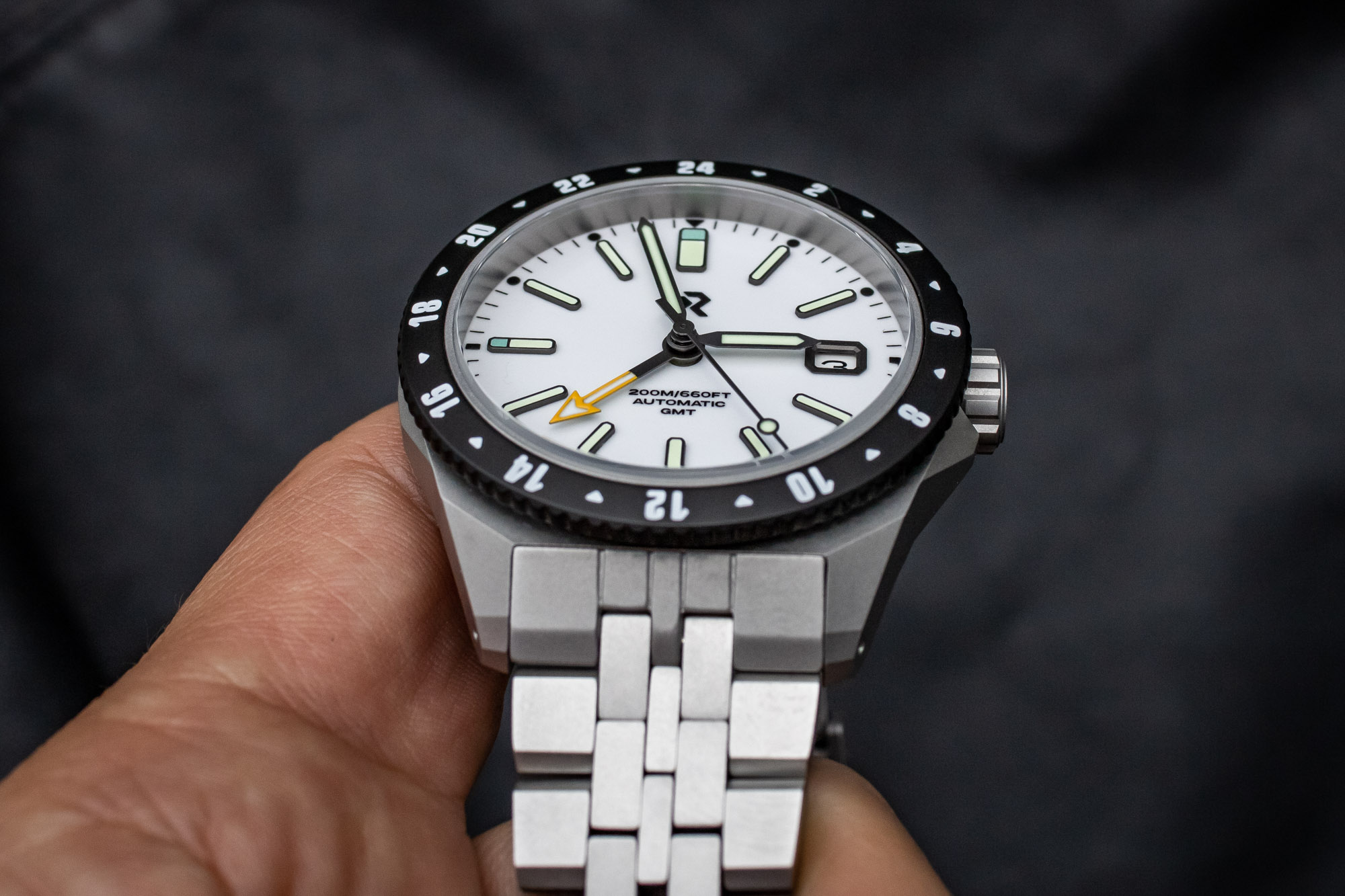
Although RZE offers the Ascentus GMT in a handful of dial colors (Carbon Black, Azure Blue, Polaris White, and Medallion Yellow), the white dial version might be my personal favorite, and it offers what is arguably the most impressive visual display in the dark, as its “Polaris White” surface is actually a full-lume dial with a subtle grain-texture finish. While the surface of dial glows blue to match the bezel markings and the 24-hour hand, the hour markers glow green to match the rest of the centrally-mounted hands for a two-tone display in the dark. I often say that non-glowing black markers and hands are best for a fully-luminous white dial as they offer what is arguably the best possible contrast in either light or dark settings. However, the dark finished outlines on the hands and hour makers offer enough contrast that legibility isn’t an issue at all, and the two different colors of lume certainly offer a lot of visual intrigue when viewing the watch in low-light settings.

One of the biggest game changers from 2022 was the Seiko 4R34 movement, which is known as the Seiko NH34 when it is sold to third parties for use inside non-Seiko watches. RZE was among the first small-scale independent brands to bring its own GMT watch to market that used this affordable multi-timezone movement, and just like many of Seiko’s other contemporary entry-level mechanical calibers, the NH34 inside the RZE Ascentus GMT runs at a frequency of 21,600vph (3 Hz), while offering users a power reserve of approximately 41 hours. Although it features quick-set functionality for both the 24-hour hand and date display, rather than being the type of GMT movement that can have its local 12-hour hand adjusted either backward or forwards in one-hour increments, the Seiko NH34 is still a proper GMT movement with independently adjustable hour hands, and until fairly recently, this was a feature that was largely reserved for watches powered by costly Swiss calibers. While RZE doesn’t make any specific mention of carrying out further in-house regulation, real-world timekeeping performance has been significantly better than Seiko’s official specs for the NH34, which are +40/-20 seconds per day, and during the time that I’ve spent with the watch, it has only ever gained a handful of seconds in any 24-hour period.
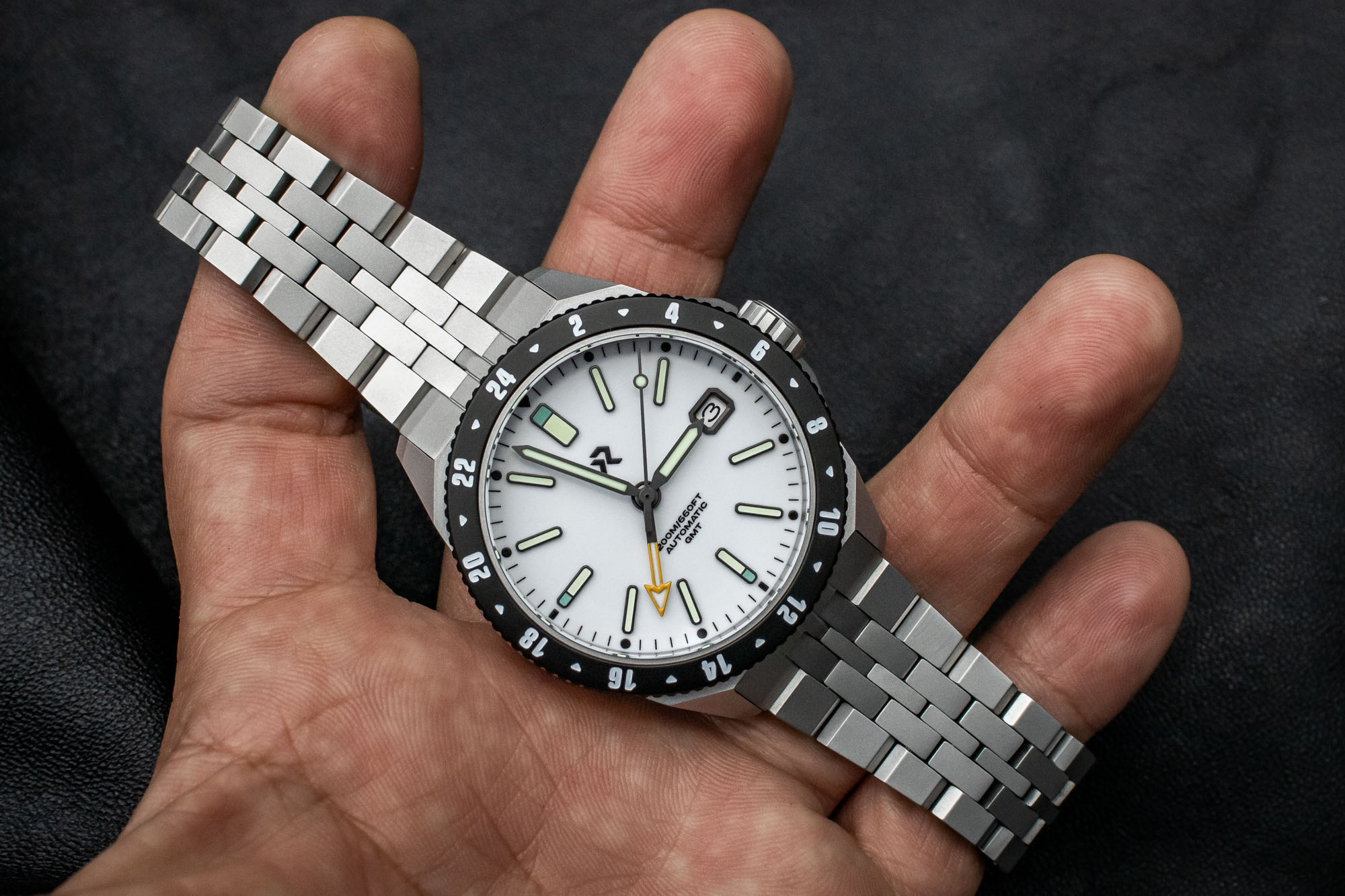
The fact that RZE is able to include a hardened titanium bracelet at this price point is rather impressive in general, especially considering the rest of the specs of the watch. Additionally, the Hex-Link bracelet fitted to the Ascentus GMT represents a significant refinement compared to the H-link style bracelet that can be found on the Endeavour. The bracelet itself features a flat five-piece link construction, and each individual piece of titanium that makes up the bracelet is separately stamped and drilled before being milled to shape and given RZE’s UltraHex surface coating. The removable links all connect with single-sided screws rather than friction-fit pins, and the end links feature integrated quick-release spring bars to facilitate easy tool-free strap changes. Due to the fact that the bracelet links are all separate components, the Hex-Link bracelet is incredibly flexible and comfortable on the wrist, and it offers a level of lightness and fluidity of motion that is somewhat reminiscent of the old hollow-link Rolex Jubilee bracelets, despite having a completely solid-link construction and being made from hardened titanium.
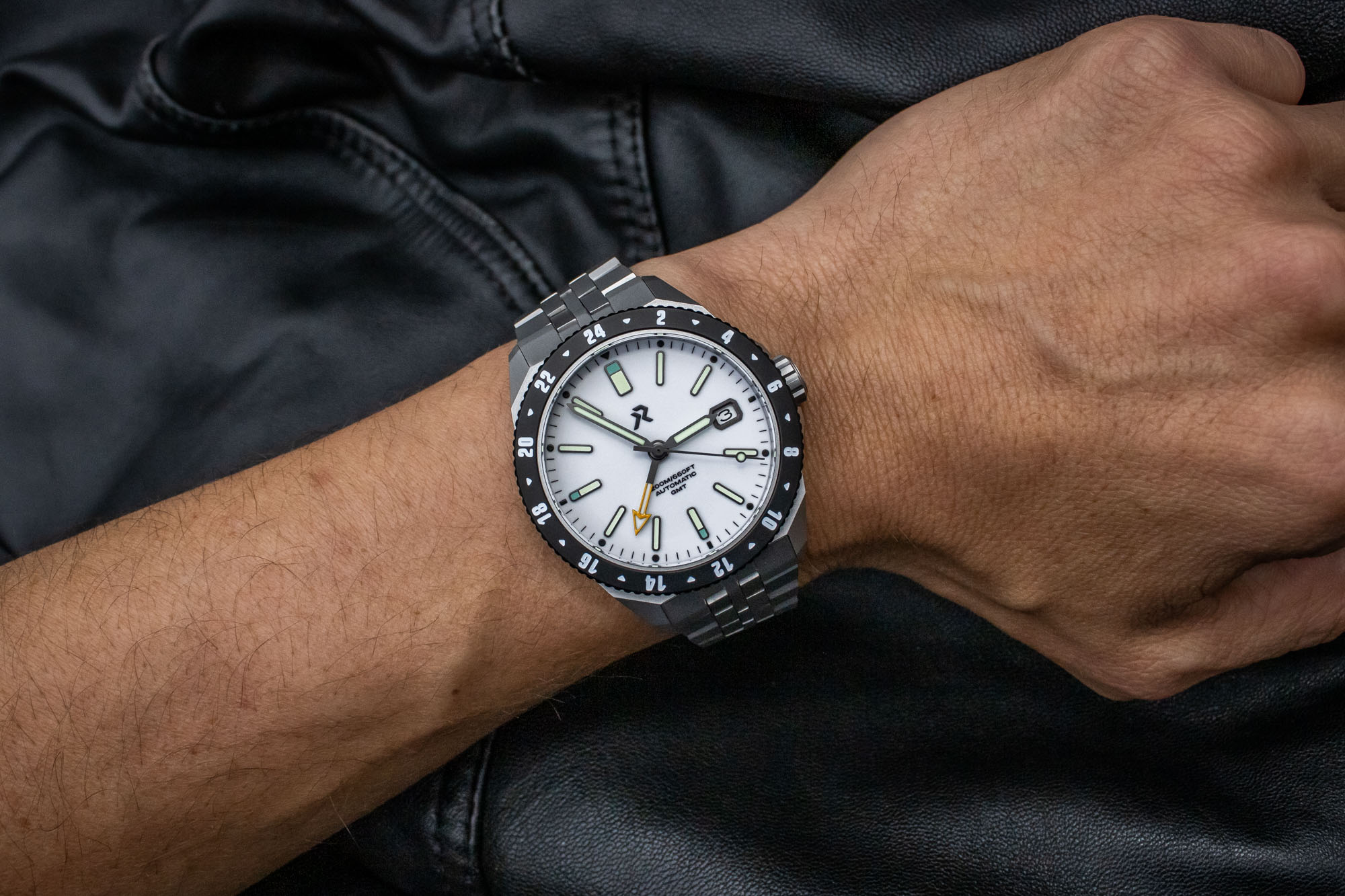
That said, on one occasion after removing the bracelet to try out the watch on a few different styles of straps, I managed to get the bracelet links folded on themselves in such a manner that the angular profile of their top surfaces were catching on the underside corners of the adjacent links, and it created a kink in the bracelet that ultimately proved to be a slight mind puzzle to get the links unfolded and laying flat again. I’m not sure it’s even possible to have this happen while the bracelet is attached to the watch, and it certainly isn’t something that can ever happen if you are wearing the watch on your wrist. However, should you swap out the Hex-Link bracelet to wear the RZE Ascentus GMT on a different strap, it’s worth keeping in mind that this has the potential to happen if you have the bracelet floating loose like inside your pocket or at the bottom of a bag. Figuring out how to untangle the links took me all of about five minutes and I wouldn’t really call this an issue with the bracelet, although I could see it creating a minor annoyance for someone if they had it happen while they were trying to swap the bracelet back onto their watch and wear it in a hurry.
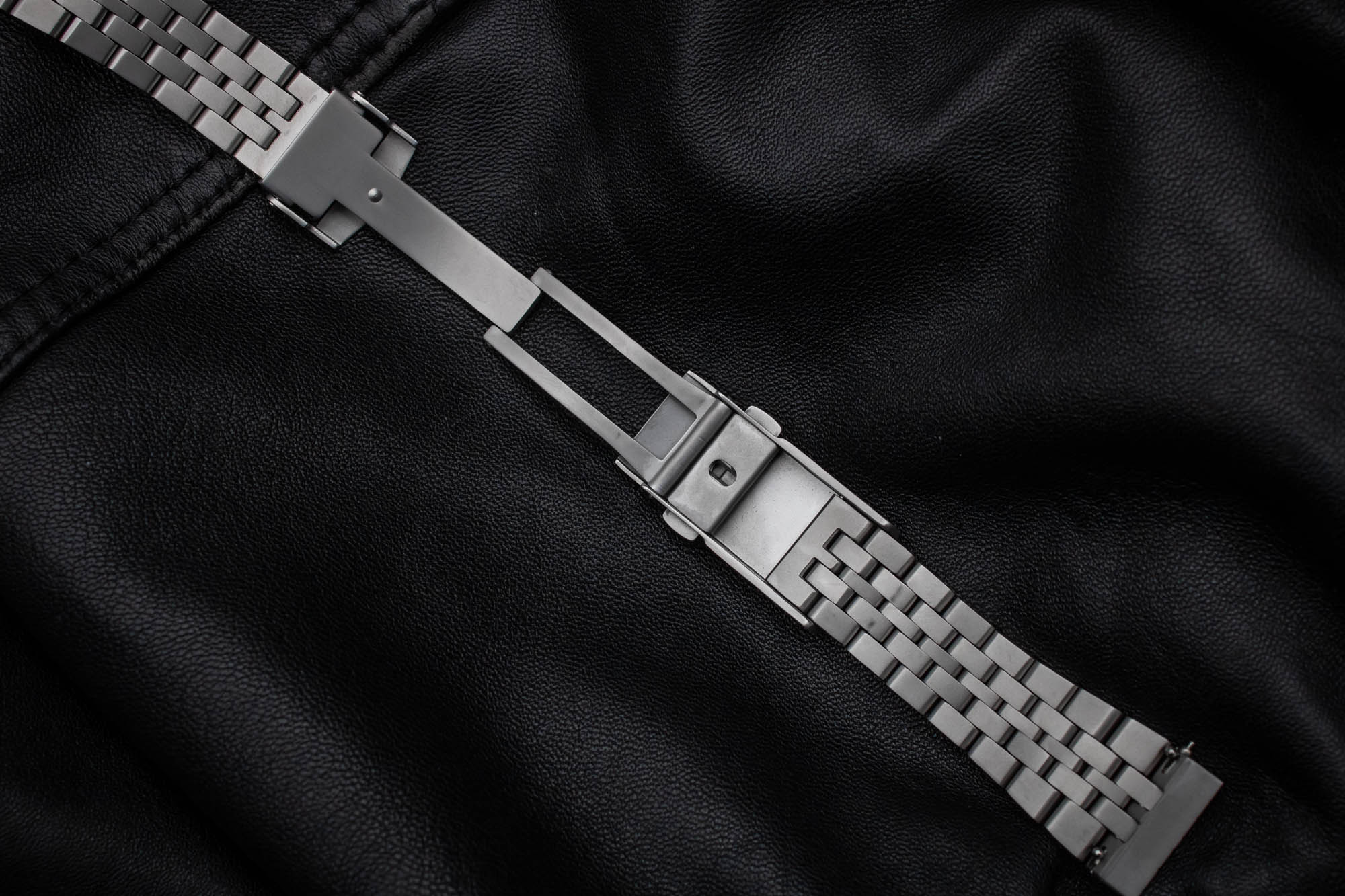
When I reviewed the Endeavor diver, I had critiqued the clasp on its bracelet due to the fact that it offered only four holes of micro-adjustment sizing and relied on a simple friction-fit closure, rather than being one with some type of mechanical latching mechanism. Both of those minor nitpicks have been remedied on the clasp fitted to RZE’s new Hex-Link bracelet, and while you still don’t get any type of integrated extensions system, the number of micro-adjustment sizing holes has been increased to six, and the clasp now includes a double push-button release paired with a secondary safety latch. Although the bracelet links themselves still taper from 20mm at the lugs to 16mm at the clasp, the redesigned clasp is slightly larger on the RZE Ascentus GMT, both in terms of length and width. That said, I personally think that the push-button release is a welcome addition and it is well worth the small additional bulk that it adds to the clasp’s overall profile.
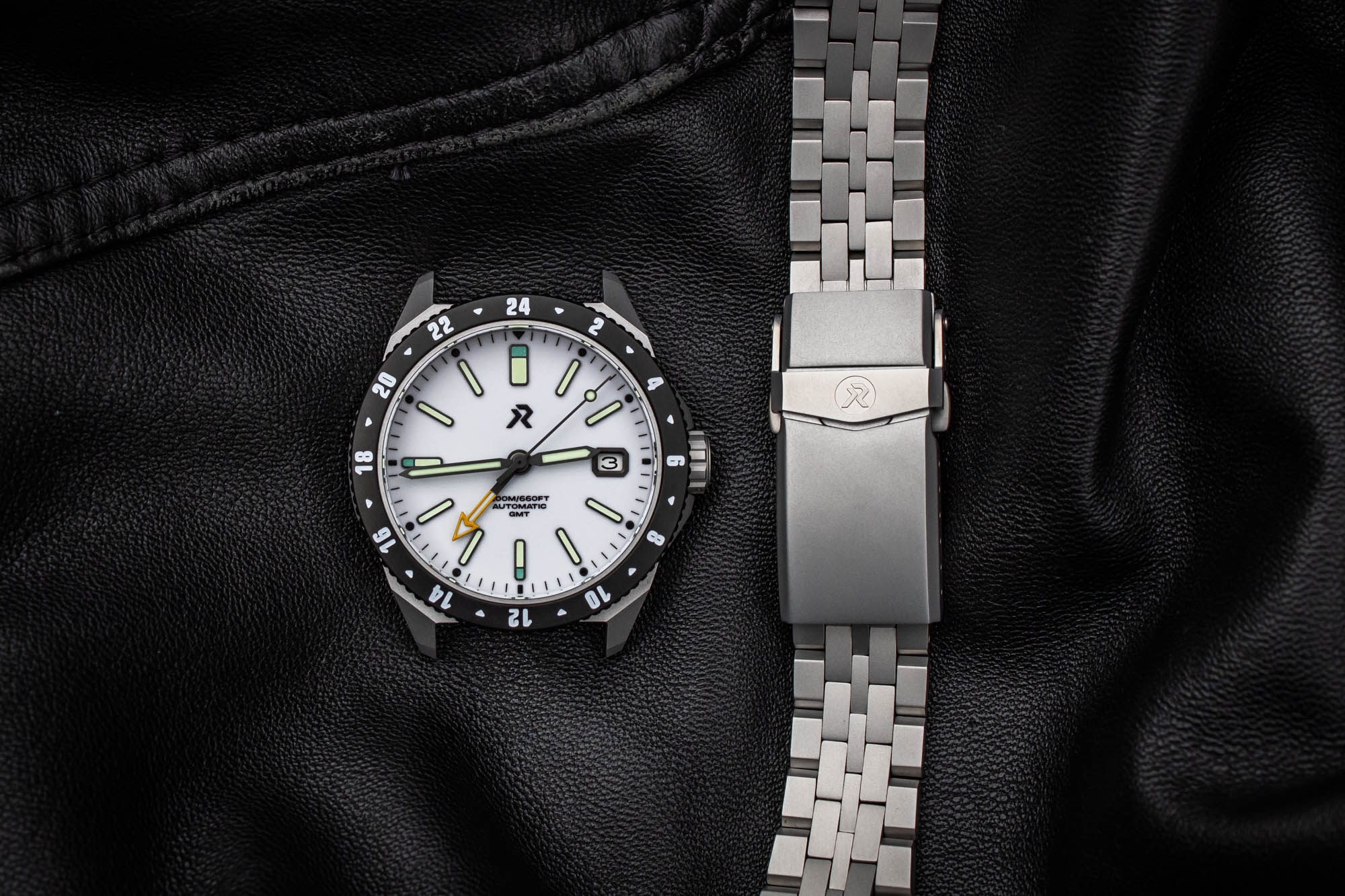
Just like its dive watch sibling, the RZE Ascentus GMT offers a modern and inherently sporty overall design, although the black DLC finish on its bezel helps to immediately set it apart from the similarly styled Endeavor diver. When fitted with the fully-luminous Polaris White dial, the watch almost has slight Sinn 105 vibes, although this is really only due to its color profile and similarly styled 24-hour hand. While I still would have preferred to see a bidirectional bezel, and ideally one that moved with a number of clicks to better correspond with its 24-hour scale, it’s hard to nitpick too hard considering that the RZE Ascentus GMT has an official retail price of just $549 USD. Priced at just fifty bucks more than the Endeavor, that relatively small additional retail premium ultimately gets you quite a lot, including a more refined bracelet and clasp, a luminous DLC-coated bezel, the addition of a date display, and proper GMT functionality. Additionally, when you compare the specs of the Ascentus GMT to those of the Seiko 5 GMT which uses the same movement, it’s undeniable that this titanium travel watch from RZE offers quite a lot of value for the money. For more information on the RZE Ascentus GMT, please visit the brand’s website.


